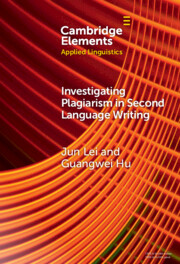Element contents
Investigating Plagiarism in Second Language Writing
Published online by Cambridge University Press: 10 December 2024
Summary
- Type
- Element
- Information
- Series: Elements in Applied LinguisticsOnline ISBN: 9781009350822Publisher: Cambridge University PressPrint publication: 16 January 2025

